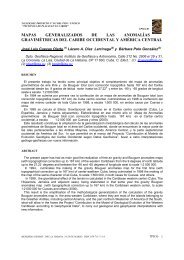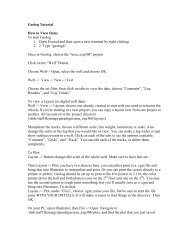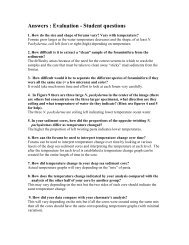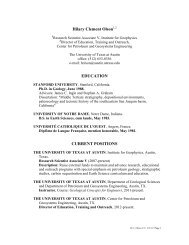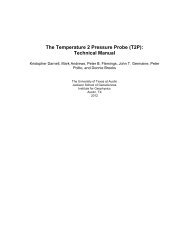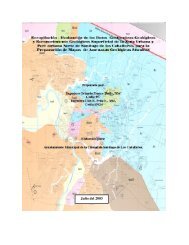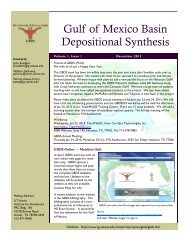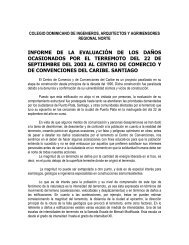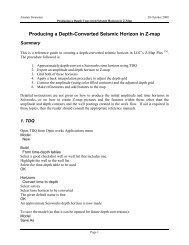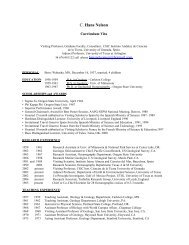Create successful ePaper yourself
Turn your PDF publications into a flip-book with our unique Google optimized e-Paper software.
Options and Upgradesther the near side of a target or a more reflective surface. Low amplitudes maybe the shadow of a feature or a less-reflective surface. When a series of theselines are combined and displayed, as the vessel moves along the track, a twodimensionalimage is formed which provides a detailed picture of the bottomalong either side of the vessel.The sidescan data is output as an array of amplitude values which represent theamplitudes for each sample cell in the beam from a single ping. The sidescanbeam (see Figure 19) has the same 1.5º along-track beamwidth as the bathymetrybeam, but the across- track range resolution is determined by the samplingrate rather than the beamwidth. The result is that each amplitude value representsan area 1.5º wide by 5 centimeters. The sidescan beam is designed with amuch wider beamwidth than the bathymetry beams so that each beam has a fieldof view from very near the vessel out to the maximum slant range of the sonar.Once the sidescan data is measured, it is transferred to the sonar processorwhere it is processed separately from the bathymetry data to ensure data integrity.The final sidescan data is output from the SeaBat sonar processor via anEthernet UDP protocol.Figure 19, Sidescan Beam GeometrySidescan cannot be used to accurately measure depths, but it can provide amore detailed picture of the sea floor. This image can be used, together withbathymetry, to identify features and to help ensure that the survey does not missany small, but significant targets.______________________________________________________________________SeaBat <strong>8101</strong> Operator's Manual 4-5 Version 3.02





